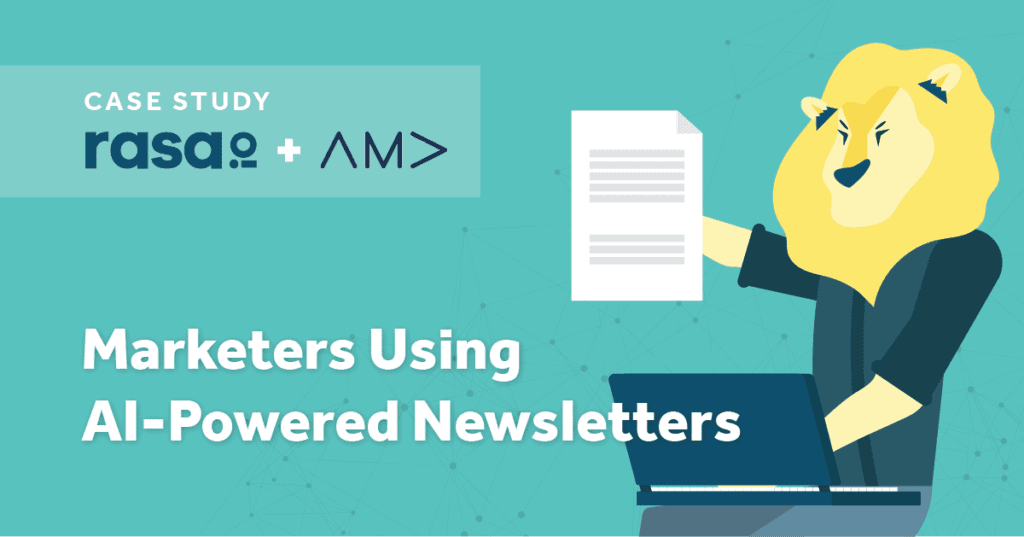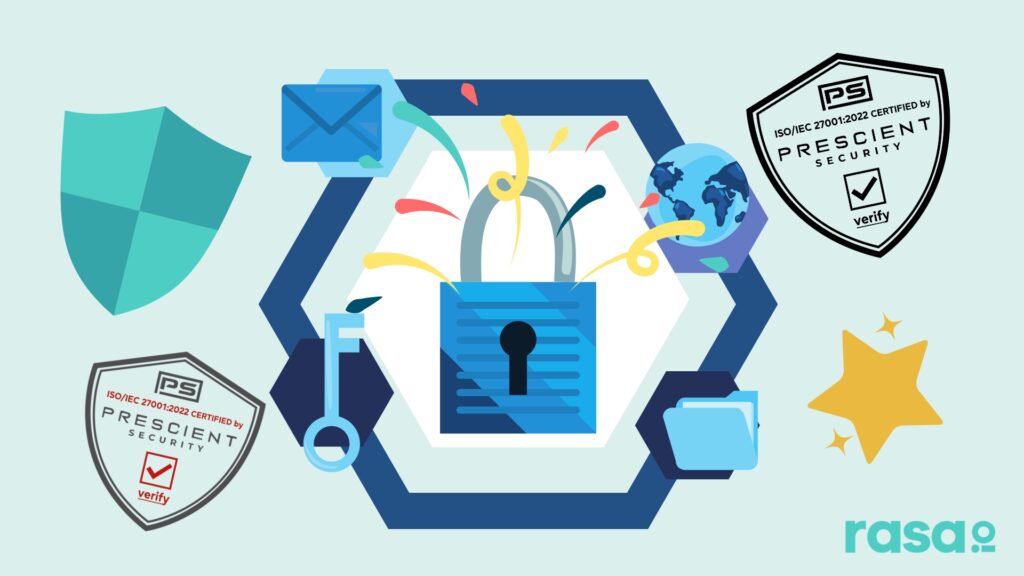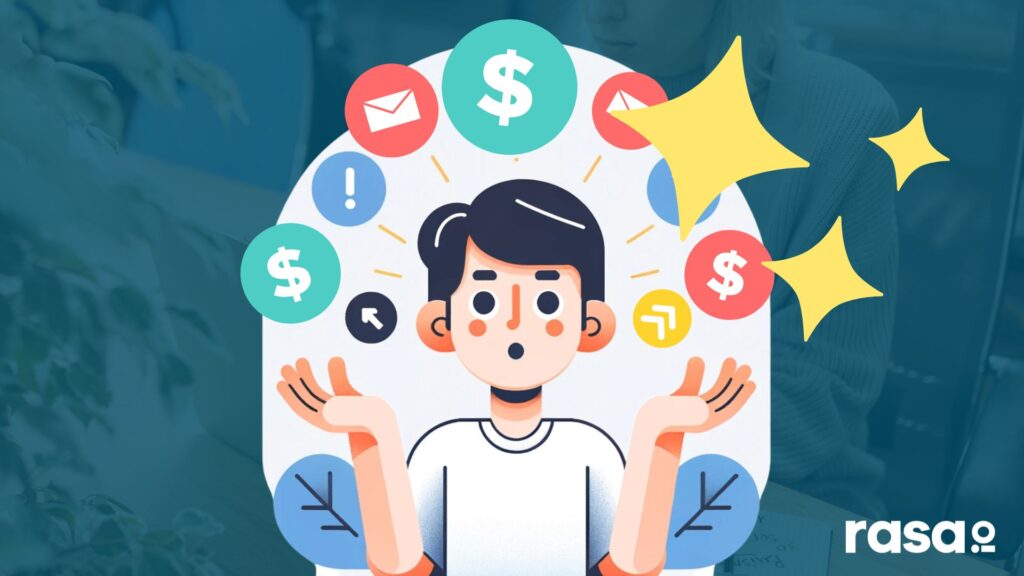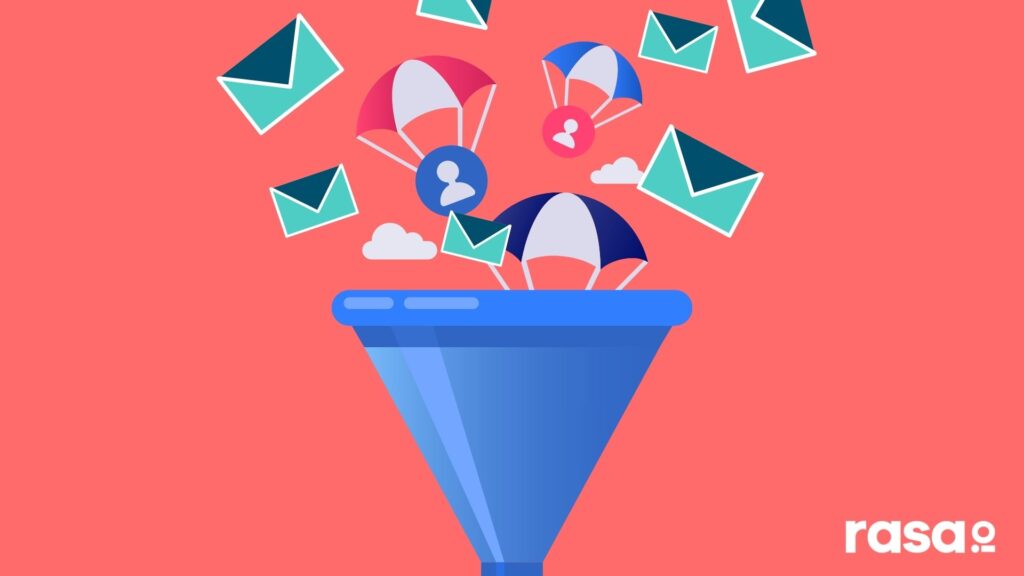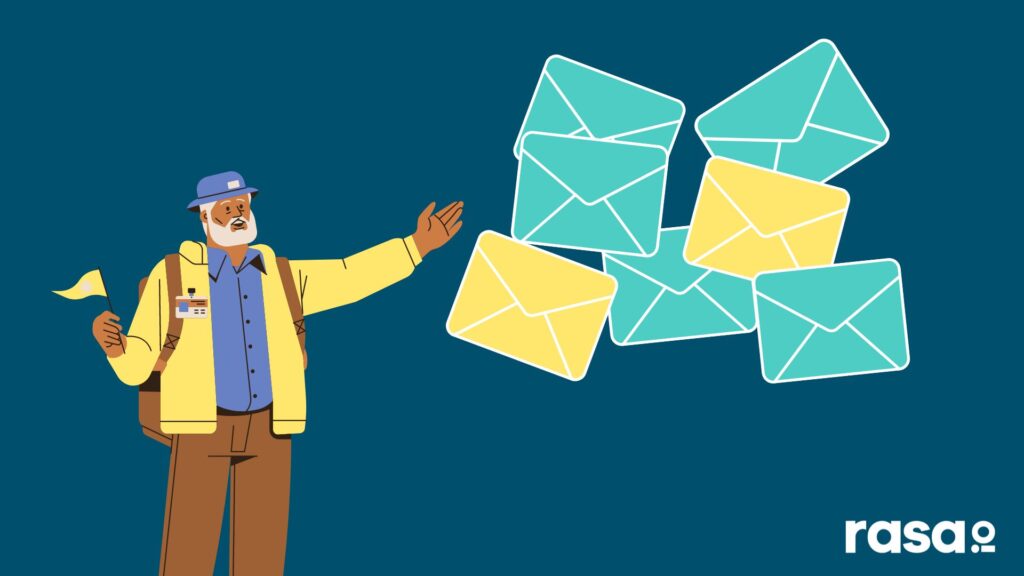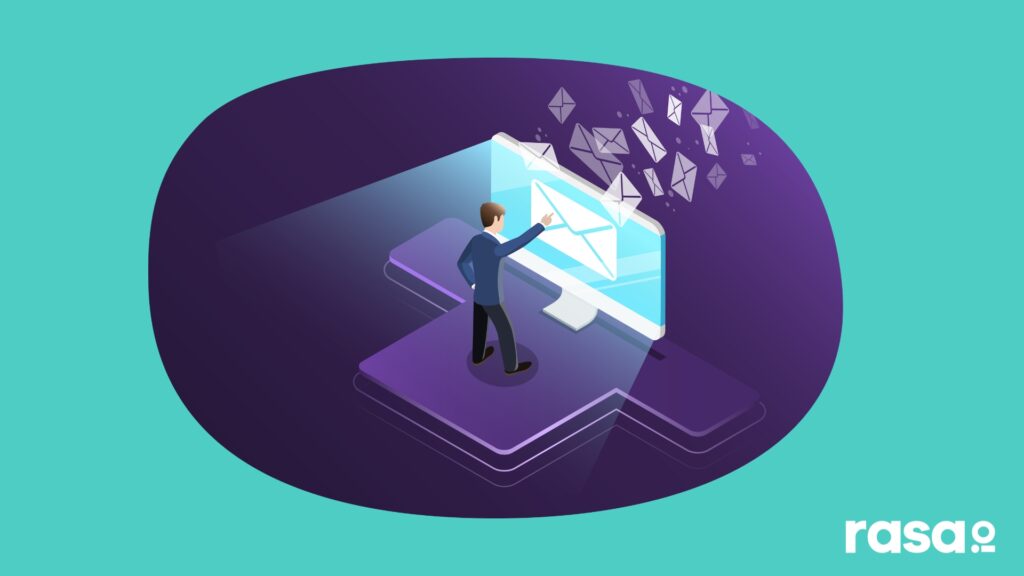Lauren Meyer
How one of the foremost experts on email deliverability breaks down this complex topic so we can understand and then take action on it. This is Lauren Meyer’s story about Pushing Send.
Lauren Meyer is one of the foremost experts on email marketing and specifically the expansive and often complex topic of email deliverability. Lauren brings more than 14 years of experience in the email, anti-abuse, deliverability and compliance industry to her role where she leads strategic relations and provides insights to support SocketLabs.
Key Points From This Episode:
- The goal of an email is not just to get someone to sign up, but to consistently send emails that are valuable to them. Ultimately it’s in the eyes of the recipient as to what is valued, what’s spam, and what smart, not spam.
- Lauren feels like you should look at analytics, but also determine the frame of mind of your audience and what their motivation is to open an email.
- She feels like you need to come to people with the right attitude, ask the right questions, and be thoughtful.
- Email deliverability can be an issue for everyone, no matter their list size. It’s important to find an ESP that has other good customers and policies in place.
- The best way to monitor your deliverability is to do so over time. Lauren shares several things that you should be looking at.
- Lauren suggests looking at what you’re changing, what you’re doing as well as how your audience tends to react to that as the best way to spot deliverability issues.
- Your job is to really align with the mailbox providers. Make their job easier to say that your messages truly deserve to hit the inbox every time. Because once you’ve built up that really good sender reputation, it’s a lot easier for you to go to the inbox.
Tweetables:
“And so I think people need to realize that the goal of an email is not just to get someone to sign up, but to consistently send emails that are valuable to them.” – @LaurenEmailGeek
“What does the recipient actually think of this mail? Do they like it? Do they want to receive it in the future? Do they want to engage with it or do they just want to get it out of their way and never think about it again?” – @LaurenEmailGeek
“I think that’s where it really takes a mix of being able to look at your analytics, being able to kind of step back as well. And just kind of have that emotional intelligence to say, is this an email that I might want to receive?” – @LaurenEmailGeek
“Understanding your own program, just really what are your goals with email and, and how can you best serve those by finding an ESP that really fits your needs. And just focusing on what you know, and what you can work on.” – @LaurenEmailGeek
“The most damaging reaction that a recipient can have to, your message is to mark it as spam.” – @LaurenEmailGeek
Links Mentioned in Today’s Episode:
Episode Transcript
Lauren Meyer:
I think the great thing about email is just the fact that it is such an open area for success, right? There’s so many different ways to succeed. There’s so many different things you can do, but you need to truly just respect your audience and so I think the more you can do to kind of just match that goal to really make email a useful and helpful channel for them as opposed to something where they’re just like, Oh gosh, man, I got to spend an hour cleaning out my inbox today. And I think anything that we can do to just help improve that inbox experience for people is just not to say, it’s going to do away with services like, Hey, but you don’t really need them. If your inbox is not a total mess, because senders are not expecting it.
Bryan Kelly:
From rasa.io, the tool for sending smarter and better email newsletters, this is Pushing Send, a show featuring people who send emails to their subscribers actually want to read I’m Bryan Kelly and on today’s show one of the foremost experts on email, deliverability breaks down this complex topic so we can understand and then take action on it. Here’s Lauren Meyer For any of our listeners who might not be familiar with the concept of email deliverability and spam or don’t think it’s something they should be concerned with. What would you say?
Lauren Meyer:
There are a lot of, I guess, levels of spamminess if you will. So there is the really bad spam the stuff that most of us never ever see. I think there was a stat there’s a lot of stats that have been put out to say that most of the mail that the mailbox providers are receiving, let’s say 85 to 90%. Most of the time is hardcore spam malware, malicious stuff, fishing that you just don’t even want to see. It’s really, really bad stuff. And so they’re doing a very good job of blocking that it’s really that 10% or 15% that that kind of makes it into their systems and isn’t blocked outright that they’re trying to figure out is this legitimate? Is this wanted by our users? Or is this something that they prefer not to see in their inboxes? And so I think there’s a little bit of a confusion over well, you know, if I get someone to opt in, especially if they’ve gone through a double opt-in process where they’ve had to confirm their email address and click to, to say, yes, I’m interested add me to your list. They kind of feel like once those people get on their list, that it’s okay for them to kind of just send whatever they want. And so I think people need to realize that the goal of email is not just to get someone to sign up, but to, to consistently send emails that are valuable to them, right. It doesn’t matter if you’re teaching them something. If you’re giving them discounts, if you’re just making them laugh, making their day a little bit better, whatever that, that value is that they’re looking for, you need to provide it and you need to provide it often enough that they’re willing to kind of take a little bit of time out of their very busy day to spend it with you. And so I think that’s where, when you start to send emails that are a little bit tone deaf, or if you’re just, you know, you’re, you’re that person who’s kind of sending a retail message. That’s like, Hey, 20% off, get it now. Well, the sale lasts and they’re really kind of using that scare tactic of like, you’re going to miss this sale, but then you know that tomorrow or the next day, there’s going to be another sale with the same amount of discount off, it sort of loses that value for people. And so I think that’s where again, people think just because they’ve, they’ve signed up for something that nothing else matters after that, but it really is a matter that people can mark your messages as spam at any time. And so, especially, you know, even for those messages that have been opted in, ultimately it’s in the eyes of the recipient as to what is valued, what’s spam and what smart, not spam, right? There’s, there’s, there’s the technical definition where spam is messages that are unsolicited, but there’s also just, what is the recipient actually think of this mail? Do they like it? Do they want to receive it in the future? Do they want to engage with it or do they just want to get it out of their way and never think about it again?
Bryan Kelly:
Hmm. Yeah. It took me a while to understand that concept and think of ways to avoid simply becoming clutter in the inbox of subscribers.
Lauren Meyer:
This is where the data side of email is just so beautiful because, you know, unlike some other channels, social channels and things like that, there’s less ability to track your success. Whereas with an email, you know, if you’re tracking, opens and clicks and things like that, you can see who’s opening, who’s clicking how often they’re doing that, that those, those positive engagements, you can also see how, you know, who’s unsubscribing or if there’s certain campaigns that are generating very high spam complaint rates or things like that. So it’s really, it’s not a matter of just looking and saying, okay, did we get a lot of opens today? It’s, it’s kind of that whole picture of overall, did we have a lot of positive interactions, a lot of negative interactions. And did we also see that we actually generated a lot of conversions on our website? Like whatever that end goal with email is, I think that’s people kind of miss miss that sometimes where they’re just so focused on like, Hey, I want to do great with email and I want to really generate as many opens as possible. And so the engage in those kinds of those tactics, such as what is it when you put the, the RE in the subject line or a forward. so it looks like you’ve kind of got that ongoing conversation with someone that one just drives me nuts, or I’ve even seen, you know, fake purchase confirmation. So, you know, it’s great that you’re trying to get someone to open, but figure they’re like, wait, what? While they’re opening that message, they’re thinking like, what is going on? Wait, did I ever correspond with this person? Did I respond in my sleep? Like what is going on by the time they opened that message they are, who knows what they’re thinking, right. And they’re not happy to see that this is just another sales offer for you or it’s, you know, pressing a donation for your presidential campaign, whatever that is. They’re probably not going to react favorably to that. Right. It’s going to end best in an unsubscribed, which doesn’t really hurt your deliverability too much. Or they’re just going to mark it as spam, which tends to be a lot easier to do. And I think that’s the other part of this is it’s not just someone thought your message is spam. It’s just, again, they want to get it out of their way. And the quickest way to do that is to just hit that spam button.
Bryan Kelly:
So we’re never going to hit it out of the park. Every time we send an email, but I think a commitment to trying to do that can help us get more from that email list.
Lauren Meyer:
Totally agree. Yeah. And think that’s, you know, email takes a lot of different skills, right? Like, especially if you’re the person who’s doing it from beginning to end where maybe you’re the person who’s helping design or code those emails, you’re creating the content, you’re doing the testing. You’re hitting send, you’re analyzing your results. Like there’s a lot to focus on there, but I think that’s where it really takes a mix of being able to look at your analytics, being able to kind of step back as well. And just kind of have that emotional intelligence to say, is this an email that I might want to receive? Like if, if I’m the audience that we’re going after, what’s their mindset, what is their frame of mind? What is their motivation to open this email and really kind of try to pair the actual results that you’re seeing with that kind of gut check response that you have to say, am I doing this the right way? Right. I think it’s in both of those things that are super important.
Bryan Kelly:
Now I’m imagining you didn’t learn a lot of this stuff in a class or a textbook that most of it was through trial and error. And you’ve also become recognized as someone who can break down things into layman’s terms when it comes to explaining deliverability. What’s one example of that?
Lauren Meyer:
I sort of learned that you need to, and this is, this is less of a technical thing with deliverability, but I learned that you really need to match the level of understanding that your customer has with deliverability or with email and then go from there. Right? So sometimes you jump on a call with someone and they have no idea what you’re talking about. Right. You’re just going right over their head. Other times you get on a call and you’re kind of giving somebody that introduction to like, well, here’s what email is and here’s why it works. And they’re like, yeah, yeah, I get it. I’ve been doing it for 10 years. Like get past it. And you kind of, you know, you sort of offend them in that sense because you treat them like a newbie when they, they are probably more experienced than I was at that point. So I think, you know, I really learned that thought of, you’ve got to come at people with the right attitude and ask the right questions and be thoughtful and not just come at them and be like, well, I don’t really know what your issue is yet, but let me just jump to what I think the conclusion might be. Because with deliverability, there are so many different directions that your issue can go in. Sometimes it’s a technical issue with your authentication. Sometimes it’s because your list collection practices are not great. And so you’re bringing in people that are complaining about your mail. Other times it’s something with the content or the coding. There’s so many different things, right? And so I think that’s, it really was that that idea of you need to process the information you need to collect some evidence, you need to ask some questions and kind of put together a full picture of, of what’s going on before you just kind of quickly shoot and give some recommendations. Because usually what happens is the customer will then go do some meaningful amount of work to improve the program. And the way that you said, or they’re going to go pull a bunch of data to try to help you out with something that process takes time and effort and money and resources. And then if you’re wrong, if that thing, isn’t the thing that fixed it, especially if you’re, you’re pretending to be very confident in that sense, they lose trust in you over time. But more importantly, their issue is persisting, right? So if it takes them a couple of days or a week to, to get through that issue, the pressure is on, right? They’re like, look, now it’s been a week and we’re losing money every single day. We need you to fix this. And you’re like, okay, well, let’s try this other thing. So really I think I learned you, you just got, you got to start right at the beginning. You’ve got to get a lot of information, very, very quickly run those basic tests. If somebody says their mail is going to the spam folder, send some test messages to that destination to see if you’re also seeing that same thing. Can you replicate that issue? Where did that issue come from? All of these things are super important before you just start spouting off deliverability advice.
Bryan Kelly:
When we come back, Lauren explained some very practical ways we should think about email deliverability, regardless of the specific size of our email list. I’m Bryan Kelly, and you’re listening to Pushing Send from rasa.io.
rasa.io:
You deserve to get more from your email list, more sales, more leads, and more engagement, but publishing a consistent newsletter that gets you more it’s time consuming. so at rasa.io, we’ve simplified, the process. We’ll automatically personalize emails for each of your subscribers based on their interests. And when your subscribers get more of what they want you get more of what you want? Everybody’s happy. Want to see how it works? Visit www.rasa.io and click how it works.
Bryan Kelly:
Welcome back to Pushing Send, I’m Bryan Kelly. Lauren Meyer is sought out for her deep expertise around email deliverability because she does a really great job of making it understandable. Here’s Lauren sharing more insight with me. Do you see deliverability as only an issue for bigger companies with massive email lists or something that should also be of concern for the small business with a thousand email subscribers?
Lauren Meyer:
I would say it’s both. I mean, everybody who is sending email can have a deliverability issue. The challenge is figuring out what that deliverability issue is going to be. So if you’ve got a program that is pretty much brand new, or it’s, you know, maybe only a thousand people to start with for you, that might seem really huge. And, and a thousand is great, right? Like let’s not knock the small senders because that’s fantastic. It really, with those senders it might be a matter that your volume is too small or you send too infrequently to, to go on your own dedicated IP and kind of have a center reputation there. So then you’ve got to decide, okay, well, I need to go on a shared IP and shared IP sometimes can be at risk for other senders that are sharing that IP to kind of ruin the reputation for you, right in today’s world, we’re moving more to domain reputation. So that IP reputation matters less, but anytime you’re sharing any kind of environment, right. Even if that’s a city bus and there’s just one smelly guy on the bus, that’s going to ruin your experience there. Right? So I think for small senders, it’s a matter of finding an ESP that has other good customers, that good policies in place to protect their own sender reputation and make sure that all of their messages are configured and, and properly able to, to hit the inbox. So setting yourself up for success there, and also working with an ESP that probably if you’re new to email can guide you to what you need to be doing as you grow and to help you along the way. Right. Whereas with those big senders, it tends to be more of, we’ve got a lot of moving parts. We’ve got a bunch of people working on the team at this point. Honestly, I’ve heard people say, well, this is just the way that it’s set up. It’s been like this for years and they don’t have either the ability or the money to, to change that. And so in those cases, it’s, it’s kind of more of a lot of like, wow, this is going to be really expensive to change, or we don’t know how to change that, or I can’t get approval from my boss. And so in those kinds of cases, it’s more of just, there’s a lot, a lot more to shift, right. It’s, it’s kind of, it’s, it’s that sort of idea of turning the Titanic around, you know, that’s not a quick thing to do. So I think in those cases, it’s just more sort of how widespread is the issue? How complicated is your program? Are you sending through just one ESP or do you have perhaps a different ESP for your transactional mail and your marketing newsletter and your sales efforts and all these kinds of things where it’s just, who’s managing those teams even, right. It could be a matter of everybody gets using the same sending domain, but you’ve got one team that’s got really good practices. That’s using that domain over here. You’ve got the sales team using it on the other side for cold email. And so they’re kind of damaging that sender reputation on that domain. So there’s, there’s just a lot to figure out. So it really is just a matter of understanding your own program, just really what are your goals with email and, and how can you best serve those by finding an ESP that really fits your needs. And just focusing on what you know, and what you can work on
Bryan Kelly:
As an email list grows, are there warning signs or certain metrics that can indicate a potential problem around deliverabilty?
Lauren Meyer:
The best way to monitor your deliverability is to do so over time. Right? Do not look at a standalone campaign in a vacuum, make sure that you’re checking to see, especially if you are sending the same type of content, if you’ve got like a newsletter and you’ve got a static mailing list, that’s getting that consistently look for signals within all of you. And don’t just look at the data over time, but also look at all of your data points, right? Don’t just look at open rates or opens and clicks because that’s just a positive interactions. Also be looking at your spam complaint, rates, your unsubscribes, your bounce rates, right? All of that stuff, because what you’re looking for is an anomaly, something that stands out. So over time when you’re turning that, if you see that your open rate is kind of slowly declining, perhaps that means that your audience is getting a little bit fatigued with the content you’re sending. So can you focus on spicing up your content a little bit, mixing it up, including different types of offerings. Can you reduce the frequency because maybe people are getting a little bit of tired of what you’re sending, but also look at for your campaign that has the best opens check. Does that also have the highest spam complaint rates, because it really is the full picture that you want to look at. So I would say as you’re, you’re kind of looking for deliverability, just be aware of anything that stands out as not normal.
Bryan Kelly:
Is there a certain range of acceptability when it comes to watching the percentage of spam complaints or even the bounce rates?
Lauren Meyer:
Most damaging reaction that a recipient can have to, your message is to mark it as spam. I follow those very, very closely because that’s one that you want to keep incredibly low. And by incredibly low, I mean 0.01 or 0.02%. I get it. That’s, that’s like that’s tiny, right. But really it’s, it’s incredibly important because when you start to see complaint rates that kind of get to 0.03 or 0.05%, those tend to be when your messages are going to start to go to the spam folder or you’re gonna get blocked. So for the spam complaint rate, yes. Keep that incredibly low unsubscribe rates. I would kind of treat very similarly because figure it’s actually easier to Mark a message as spam. So if you’re unsubscribed rates are high, chances are, you’re also having an elevated spam complaint rate as well. So you marry those two, but yeah, truly, you know, some of the stats that I’ve looked at for customers, you do see that steady decline in a certain metric. Right? So for example, open rates, right? So it’s, you know, the open rate was 35% over time below for three or four months, it kind of drops to 30 and then it kind of dips down to 25%. So in that case, yeah, it could just be a matter of your subscribers are less interested in your mail than they used to be, but it also could be a signal that a little bit of your mail is starting to go to the spam folder. Right. So that steady decline is as one thing to look out for. But also just if you see some metrics spike up, right? So I would say a bounce rate is a good one here. There’s two types of bounces. There’s hard bounces, which are typically like a, like an invalid address. If you all of a sudden see that your invalid address rate goes through the roof, that probably means that you’ve got some kind of bot attack that’s happening with your signup process or somebody on your team has uploaded a purchase list or some other lists that they found in their grandmother’s closet somewhere, that kind of stuff is dangerous, right? So you want to look for those spikes. It could also be a soft bounce, which is usually like an ISP block or just some sort of temporary failure. And in those cases, when you see something like that, that’s typically a signal from the mailbox provider that says, Hey, there’s something that you’re doing that we don’t like. And perhaps we haven’t liked it for a while, even kind of pushing you to the spam folder, but now we’re starting to block your mail. So, you know, I think it really is, is looking for those, those spikes to say, like, we didn’t change anything yet all of a sudden our audience is reacting very differently or we did change something and are our audiences reacting differently. So it’s, it’s, it’s a matter of kind of looking at what you’re changing, what you’re doing as well as how your audience tends to react to that. I think that that’s usually the best way to spot deliverability issues
Bryan Kelly:
In the B2B space is kind of interesting when we think about soft bounces. So people change jobs and often set up with an employer’s email address domain, but then they leave without unsubscribing to that email list or dozens of email lists they’ve signed up for. Is there any way to mitigate this and keep an email list clean?
Lauren Meyer:
Especially in, in the case that you mentioned where customers will not even the customers, wherever recipients have moved on to another job, you figure, if you try to send to that email, just like, did that email address just like you have in the past, it’s going to go from where every time you’re sending that to that email address, you get a positive response, right? It’s delivered, maybe you even see signs of an open or a click or some kind of engagement from that recipient, but then once they switched jobs, what’s going to happen is their employer’s going to turn off that email address, right? So you’re going to get a bounce response back, a hard bounce that says this email address no longer exists. At that point, you should be removing that email address from your list, suppressing it, doing something to never send to it again. And so figure, even if you have some people who are switching jobs and you are seeing a couple of those hard bounces come in, that should be a very small portion of your list because not everybody is switching jobs on the same day. Right? So, and, and the key is if you’re sending an overall, your bounce rate is quite low. That is okay. That is just part of normal churn. I think what typically tends to happen is when we have customers who are working on some kind of re-engagement campaign, or they’re sending to a list that maybe they haven’t engaged with since last holiday season, or last time they had a big sale or a big event, that is where you’ll tend to see that they’re like, well, we haven’t sent any of these addresses in six months or eight months or something like that. And so when they hit send figure, all of those people, who’ve switched jobs within that period, then you start to, you actually see a very high bounce rate on that one specific send. And that one is going to ding you worse from deliverability perspective than just having a very consistent, but very low amount of bounces over time. So I think that’s, that’s one option. I would say, if you are doing a re-engagement campaign or sending to one of those lists that you haven’t contacted in a while, it’s a good time to run that through an email verification process. The point is not to remove every single hard bounce. It’s not to clean up your list and say that it’s going to be magically perfect now. It’s just to help you mitigate that risk of, of having a very high, hard bounce rate, because you know, you haven’t contacted that list, but if you are regularly emailing people, you should see those hard bounces just come in very slowly over time. And that should not be a problem for you.
Bryan Kelly:
So we’ve covered a range of topics, but on a final note, I wanted to ask how important you think understanding email deliverability is to getting the most out of our email lists.
Lauren Meyer:
Deliverability is essential to getting the most out of your email list. It’s a very much overlooked part of email, I think. And again, this is there’s many reasons for this. People are busy. People are focusing on other things. They need a little bit more education here, but really truly, if you’re looking to optimize your program, it requires you to understand what factors impact you the most when it comes to hitting the inbox. Because if you’re sending lots of emails, but they’re going to the spam folder, or they’re getting blocked, it doesn’t matter if you’ve got a list of a million recipients, because none of them are able to see your content. And so it really is a matter of, you know, there’s this mix of quality over quantity. I like the quality aspect, but you have to find that fine balance of how can you grow your list as quickly as possible, as much as possible while still proving to mailbox providers that when you hit send, the majority of your recipients are finding that content to be valuable, to be helpful for them. They were going to engage positively for that because you have to figure mailbox. Providers are really just trying to make their users happy to give them a good experience with their inbox. And so your job is to really align with the mailbox providers. Make their job easier to say that your messages truly deserve to hit the inbox every time. Because once you’ve built up that really good sender reputation, it’s a lot easier for you to go to the inbox. Whereas if you’re kind of waffling a little bit, because you’ve got list collection practices that are kind of pulling in leads and there sometimes marking your mail as spam, or if you’re running a sweepstakes, perhaps, and you’re bringing in lots of people to your newsletter, but then none of them are ever engaging. They’re not opening, clicking. Those elements will hurt your deliverability over time. So it really is just something you don’t need to be looking at your deliverability all day every day, but really just be aware enough of your stats to know when you’re having mail blocked by certain destinations, to have an idea of what your open rates are, as well as your unsubscribe and complaint. Rates really just match all of those different data points together to put together a bigger picture of do my subscribers, like my mail? And if my subscribers like my mail than the mailbox, providers should be happy with it as well. And they’ll deliver it to the inbox.
Bryan Kelly:
There’s so much we can do to ensure our emails have the highest and best chance to hit subscriber inboxes. And thankfully Lauren has shed light on some things you probably haven’t thought about or considered. I know I walked away from our conversation with a ton of notes. Coming up on our next episode. We’ll hear from John Vuong, one of the few true local SEO experts out there today. John shares his personal experience with using email for his local search agency. So don’t miss with John shares during our conversation. Now, if you’re listening to Pushing Send for the first time, be sure to subscribe at Apple podcasts or wherever you’re listening. So you don’t miss an episode. And if you’ve enjoyed what you’ve heard and encourage you to check out a few other episodes while you’re here, lastly, leaving a review will help us share these stories with others like you, thanks in advance for doing that. I’m Bryan Kelly, and you’ve been listening to Pushing Send from rasa.io.
Listen to the next podcast episode
How one local SEO agency owner thinks about email and how he developed his perspective on email strategy. This is John Vuong’s story about Pushing Send.









